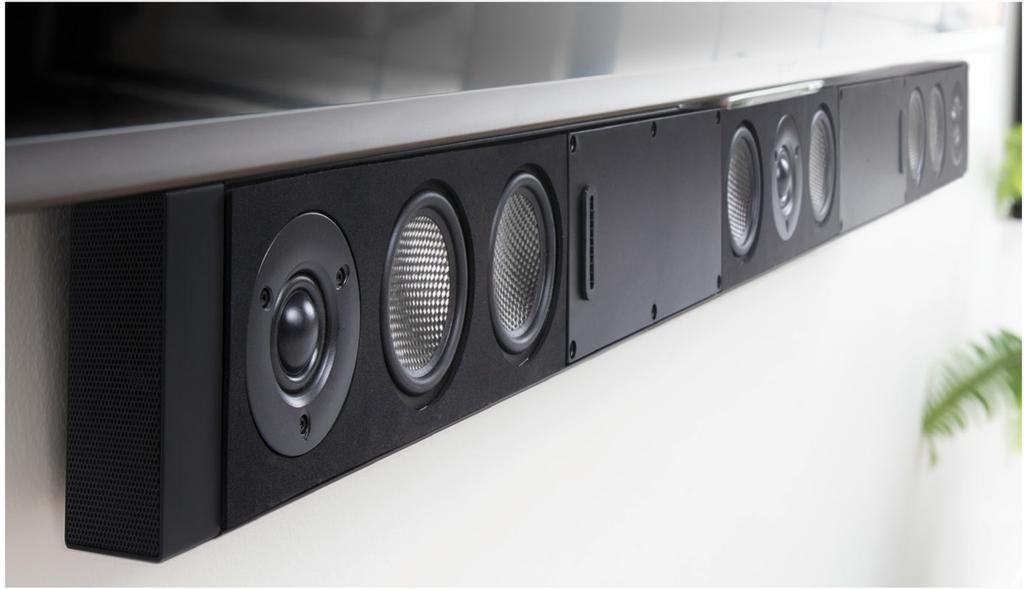The entertainment experience can reach new heights with the power of a passive soundbar, which can bring home theater systems to life. Like a standard soundbar, a passive soundbar requires an amplifier to function its channels. Many people continue to use them because they offer superior audio quality compared to other modern high-resolution sound system options, despite having a more complicated—and expensive—installation process.
About Passive Soundbars
Passive soundbars, like many other soundbars, feature several channels based on the number of speakers packed within them. They usually have three channels: left, right, and center. These groups can be linked with one or many speakers. All passive soundbars have ports in the back for connecting to a receiver. Passive soundbars have the added benefit of complementing other speakers and replacing the front left, right, and center speakers in a home theater setup.
Features of Passive Soundbars
Passive soundbars lack an in-built amplifier, requiring external amplifiers or receivers to function correctly. This is the only difference with active soundbars, which have amplifiers included. Modern Passive soundbars now offer Bluetooth and Wi-Fi connectivity. A passive soundbar’s key features include the following:
- Passive crossover components break audio signals and transmit them straight to speaker drivers.
- Different amplifiers that power the audio signal
- includes inductors, capacitors, and resistors.
- Individual amplifiers that provide whole signals to the speakers
Benefits of Passive Soundbars
Sound Output
Passive soundbars introduce different channels that can connect to an amplifier or receiver, allowing users to mix audio in the home theater. It becomes easier to maximize the performance of any audio equipment by pushing it to its limits. It all takes a soundbar amplifier that will drive the speakers for better sound and take the audio setup to new levels.
Audio Quality
Regarding pure audio quality, passive soundbars usually offer the best value. A high-end soundbar is a way to go if audio clarity is a top priority. Compared to other options, the sound of high-end passive soundbars will be sharper and more precise. A basic passive soundbar will offer fantastic sound in a small media room.
Flexibility
One of the most top reasons to choose passive soundbars is their versatility. External speakers, which require receivers or amplifiers to function, can be connected to the soundbar. It creates a more sophisticated tone for a modern house. If a soundbar has enough channels to accommodate several speakers, one can tune each speaker separately to get more depth. A separate amplifier lets users switch out the right, center, and left speakers as needed, delivering a richer, louder, and crisper sound.
Conclusion
Various passive soundbars come with different features, but there are several excellent features to look for. They include Damping technology, Balanced Dual Surround System, Wall or Shelf installation, Aluminum housing, and Spatial Array Technology. If one takes the time to set everything up right, one will enjoy some truly stunning audio from a passive soundbar.
Related posts
HOT TOPICS
Recent Posts
- What Is The Use of Palletizing Cobots? November 14, 2023
- Python Programming & Its Importance In Machine Learning September 27, 2023
- How email encryption works September 14, 2023
- How to create a custom WordPress website maintenance plan May 23, 2023
- Social Media Marketing – How It Can Benefit Your Business May 13, 2023
- Benefits Of Modern Software For Fleet Tracking May 3, 2023
Archives
- November 2023
- September 2023
- May 2023
- April 2023
- March 2023
- February 2023
- December 2022
- November 2022
- October 2022
- September 2022
- August 2022
- July 2022
- June 2022
- May 2022
- April 2022
- February 2022
- December 2021
- November 2021
- October 2021
- September 2021
- August 2021
- July 2021
- June 2021
- May 2021
- April 2021
- October 2020
- September 2020
- August 2020
- July 2020
- June 2020
- May 2020
- April 2020
- February 2020
- January 2020
- May 2019


